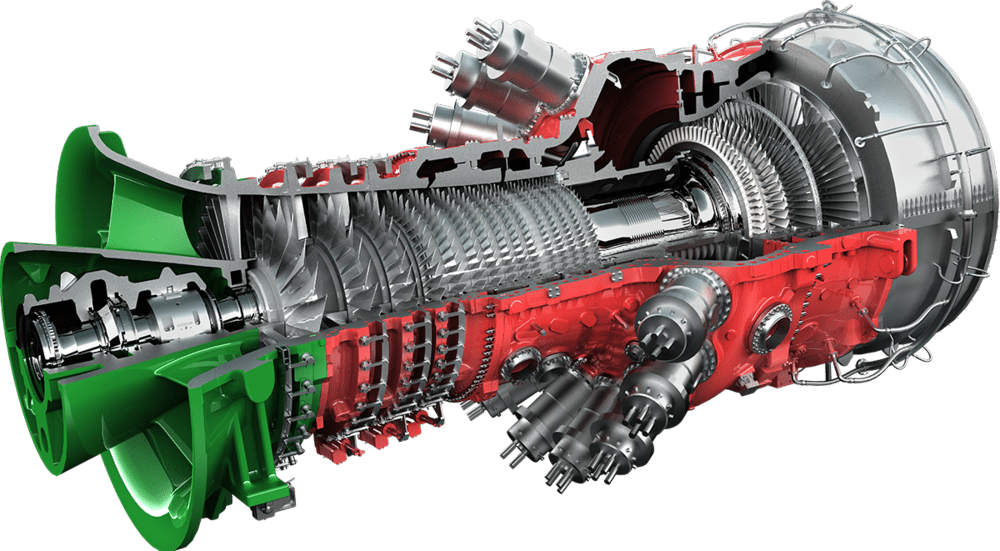European Project Launches to Demonstrate High-Volume Hydrogen Gas Turbine Combustion
Ansaldo Energia and partners have kicked off the FLEX4H2, a four-year project to design, develop, and validate a highly fuel-flexible gas turbine combustion system based on Ansaldo’s sequential combustion technology that will be capable of operating with up to 100% hydrogen.
The FLEX4H2 (or Flexibility for Hydrogen) officially began on Jan. 1 and will run until December 2026. During that time, the €8.7 million ($9.3 million) project’s nine partners will explore challenging conditions associated with hydrogen combustion, including H-class operating temperatures, which are “required for highest cycle efficiency, while still meeting emission targets without any use of diluents,” said Italian gas turbine manufacturer Ansaldo Energia on Feb. 9.
Based on Ansaldo’s Constant Pressure Sequential Combustion Technology
The design of the FLEX4H2 combustor will be based on Ansaldo’s Constant Pressure Sequential Combustion (CPSC) technology, a second-generation combustion system developed for Ansaldo’s flagship GT36 H-class gas turbine (760-MW in combined cycle) combustors.

Sequential combustion evolved from burner technology applied to Ansaldo’s GT26 and GT24 gas turbines. In the GT26, sequential combustion is implemented with two combustion stages separated by a high-pressure turbine: the first stage (EV) operates at pressures greater than 30 bar, while the second stage (SEV) operates at roughly half of the EV pressure. In the GT36, no high-pressure (HP) turbine is implemented, but the sequential combustion concept is maintained.
“Due to the high-burning velocity and high-flame temperature, standard gas turbine combustion technology struggles at high hydrogen content with high [nitrogen oxide (NOx)] emissions and the risk of flashback,” Ansaldo explained. “This usually results in the necessity of power derating to comply with required standards. Based on two successive combustion stages, the GT36 recovers the derating of the first stage by shifting the fuel into the second stage. This allows for full operational flexibility, low NOx, and no derating.”
Ansaldo says its GT36 can already combust 70% hydrogen in natural gas blends. “Development to 100% is on the way,” it said.
A New Improved Combustor
While the FLEX4H2 will be based on Ansaldo’s proprietary CPSC technology, project partners are ultimately targeting the development and demonstration of a “new improved combustor,” which can operate any concentration of hydrogen at full gas turbine operating conditions. The project aims to boost the combustor’s technology readiness to level 6. Its design “will be fully retrofittable to existing gas turbines, thereby providing significant opportunities for refurbishing existing assets,” Ansaldo said.
The European Commission documents noted that the CPSC concept, which is based on “a unique longitudinally staged combustion system,” yields the best fuel flexibility. The concept also “has the greatest potential to achieve the project target of demonstrating stable and clean combustor operation with concentrations of hydrogen admixed with natural gas, up to 100%, at firing temperatures typical of modern H-Class engines.”
FLEX4H2 is slated to take place in three steps that will involve combustion of hydrogen volumes of 70%, 90%, and finally, 100%. “In this pursuit, a subset of specific performance data (KPIs) will be met within the project timeline and with the planned resources and allocated budget,” project documents say.
The project will also use “state-of-the-art computational tools, analytical modeling, and diagnostic techniques to investigate static and dynamic flame stabilization.” Testing is slated to be performed at European laboratories in “test campaigns at reduced scale and in full size (at atmospheric and pressurized conditions).”
According to the European Commission, as the project prepares for commercialization, Ansaldo and partners will also develop a roadmap toward demonstrating the fully developed system in a power plant environment.
Ansaldo said that FLEX4H2 “will present credible pathways for comprehensive exploitation of the project’s results and (thereby) provide the basis for a firm contribution to the EU Green Deal towards decarbonization of the electric power sector by 2030 and beyond.”
FLEX4H2 partners include entities from six European countries. Along with Ansaldo, these include Arttic Innovation (Germany), Centre Européenne de Recherche et de Formation Avancée en Calcul Scientifique – CERFACS (France), Deutsches Zentrum für Luft- und Raumfahrt – DLR (Germany), Edison (Italy), ETN Global (Belgium), Sintef Energi (Norway), Ansaldo Energia Switzerland (Switzerland), Zürcher Hochschule für angewandte Wissenschaften – ZHAW (Switzerland).
The project is jointly funded by the EU Horizon Europe Research and Innovation Framework Programme under the Clean Hydrogen Partnership (GA No. 101101427). It also has funding from the Swiss Federal Department of Economic Affairs, Education and Research, and the Swiss State Secretariat for Education, Research and Innovation (SERI).
—Sonal Patel is a POWER senior associate editor (@sonalcpatel, @POWERmagazine).